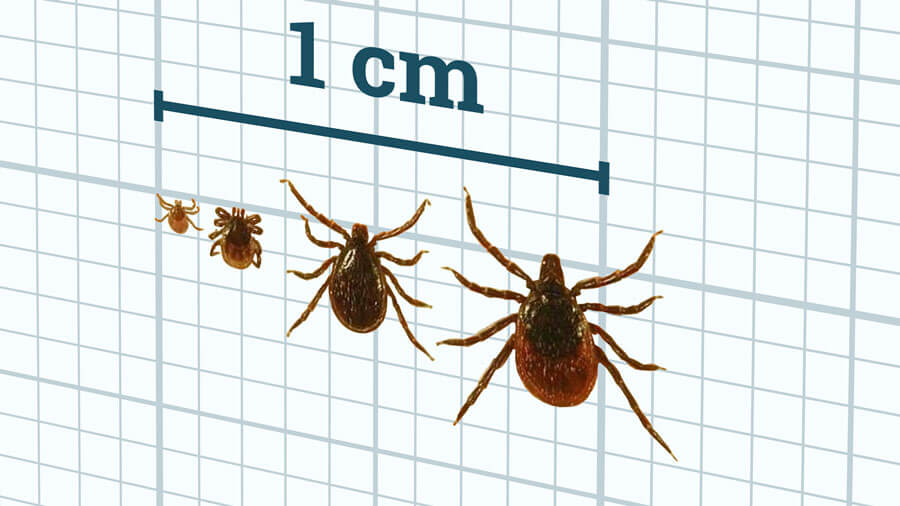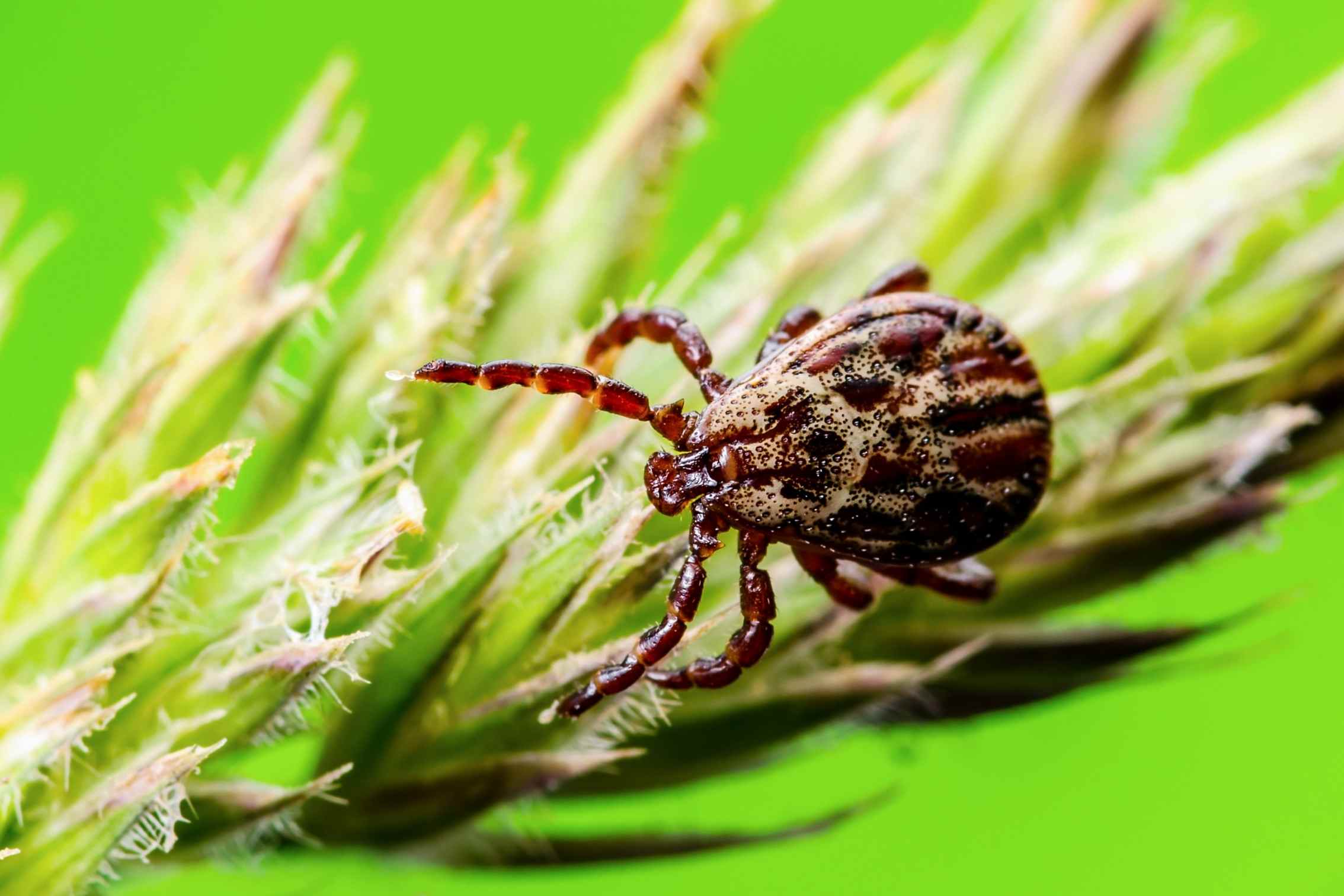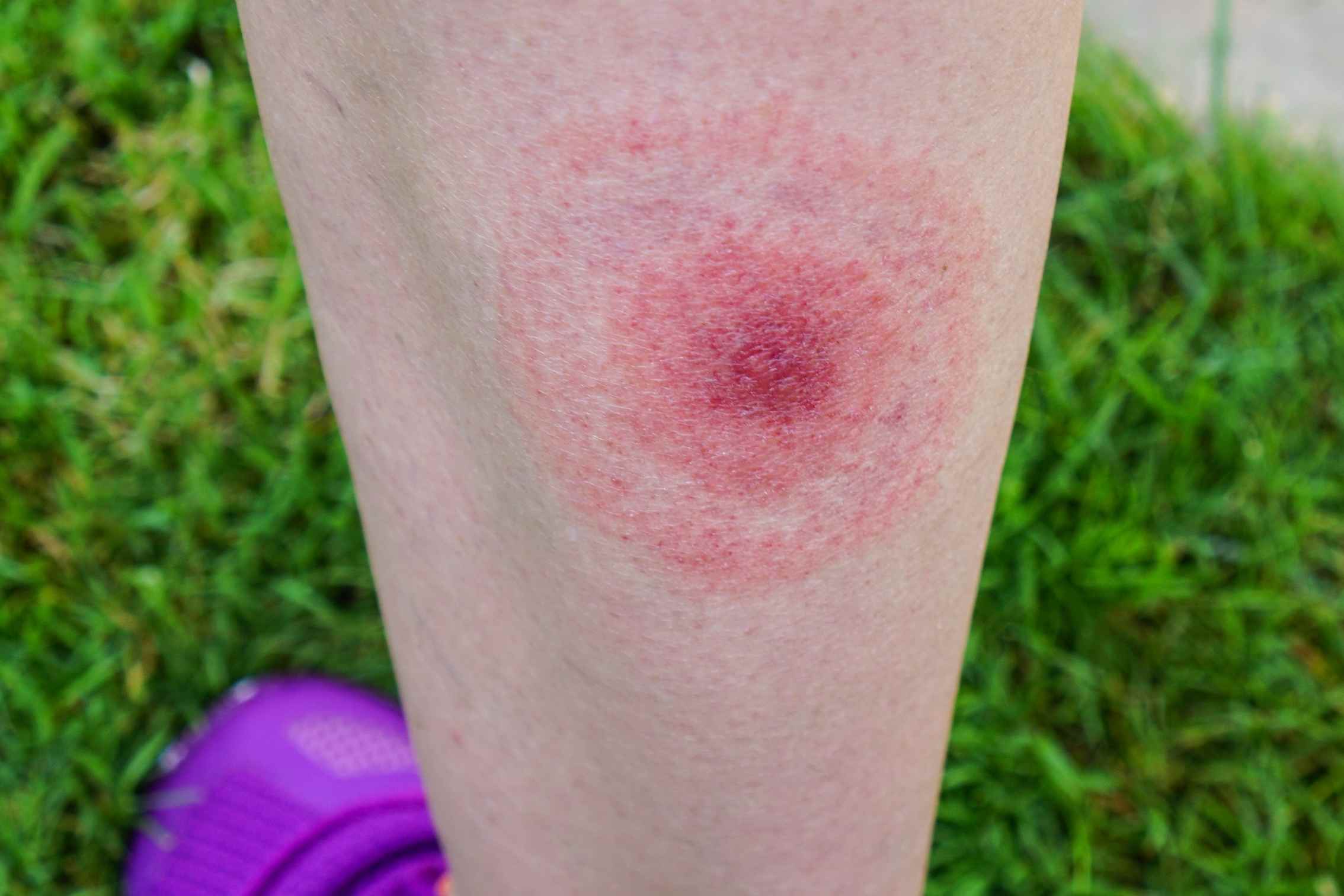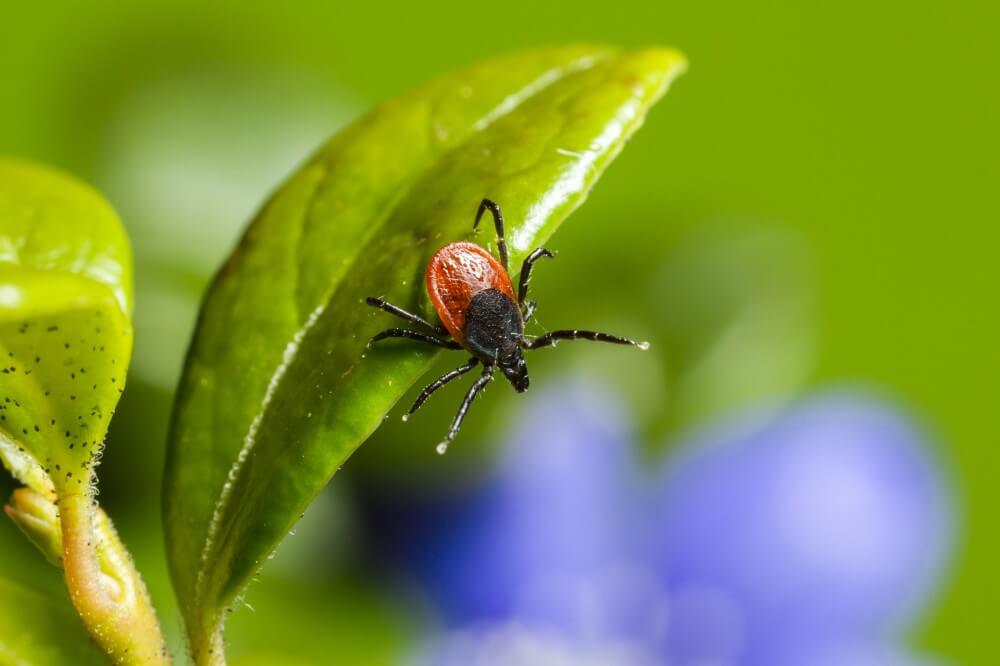Tick-borne diseases
About ticks

In recent years, with changes in typical winter weather, the tick season begins earlier and lasts much longer, as frost occurs later and is less severe. Due to mild winters and insufficient frost, the number of ticks increases every year. Ticks can be found wherever there is grass, shrubs, tree leaves, within cities and without.
Ticks have three different stages of development — the larva, the nymph, and the adult tick (female and male). They need blood at all stages of development. Feeding usually lasts a few days, less often for about a week. Larvae and nymphs need feeding to move on to the next stage of development, while females feed to produce eggs. Male ticks are unable to consume blood, so they bite only for a short time.
People often become anxious after a tick bite, as these insects transmit several infectious diseases. The best-known diseases are tick-borne encephalitis and Lyme disease. According to the Disease Control and Prevention Centre (SPKC), in 2018, 169 and 481 cases were registered in Latvia, respectively. In our region, ticks also carry such microorganisms as ehrlichiae and anaplasmae, which can cause diseases not only in livestock and dogs but also in humans.
According to the SPKC data, 25% of the ticks collected in the wild are infected with Borrelia, and 1% with the TBE virus. However, these numbers are growing every year. A disease after an infected tick bite occurs in about 5–7% of cases. A bite from an infected tick may not cause the disease, however. Therefore, a positive or negative test result indicates only the risk of disease and does not change the potential prevention and treatment tactics.
Regardless of the result of the tick test, it is recommended that for one month after the tick bite, you take more vitamins in the form of fruits and vegetables, drink more fluids, avoid colds, excessive sun exposure, alcohol consumption, and intense physical exercise. You should definitely monitor your health more closely or consult your family doctor if in doubt. Be sure to present the result of the tick testing to the doctor.

Tick-borne encephalitis (TBE)
Central nervous system disease caused by tick-borne encephalitis virus (TBEV) of the Flaviviridae family. The European subtype of this virus is the most common one in Latvia. Compared to the Far Eastern virus subtype circulating in eastern Russia, China, and Japan, tick-borne encephalitis caused by the European subtype virus has a milder form, and complications are less frequent. After the incubation period (7–14 days on average), the disease usually occurs in two phases. The first phase is characterized by an elevated temperature that lasts 2–4 days. It is accompanied by non-specific symptoms — fatigue, headache, muscle and joint pain, nausea, loss of appetite. During this time, the virus circulates in the blood. Then an asymptomatic period follows, lasting an average of 8 days (1–20 days) when the disease does not show any symptoms. Then, if the person does not recover, the disease progresses to the second phase. Central nervous system disorders (symptoms of meningitis or meningoencephalitis) occur. These include fever, headache, nausea, vomiting, photophobia, positive meningeal symptoms (stiff neck). They may be accompanied by anxiety, impaired consciousness, convulsions, dizziness. Approximately 20% of cases of tick-borne encephalitis have complications. If a person has had tick-borne encephalitis, long-lasting immunity develops, and the person cannot contract this disease anymore. There are no specific drugs for this disease, and doctors recommend timely vaccination.

Lyme disease, Lyme borreliosis
The pathogen is a spiral-like, motile bacterium from the family Spirohetacea, grouped together in a genome group called Borrelia burgdorferi sensu lato. Human disease is caused by 3 species from this group: Borrelia afzelii, Borrelia garini, Borrelia sensu stricto. Lyme borreliosis can develop if the person is bitten by an infected tick. Lyme disease is transmitted by two species of Ixodes ticks found in Latvia — Ixodes ricinus (dog tick) and Ixodes persulcatus (taiga tick), which is more common in Latgale.
Lyme disease has several stages. The first is the stage of local infection: 7–14 days after the bite by an infected tick, bacteria begin to multiply at the site of the bite. Clinically, it manifests as a red spot with a lighter middle part (may also have a darker middle part around the bite site), which is more than 5 cm in diameter and with a tendency to become larger. The spot disappears within 1–2 weeks. This characteristic local skin lesion is called circular or migrating erythema (erytema migrans). Erythema does not develop in all people, but only in 40–70% of cases. If erytema migrans is found, laboratory confirmation of Lyme disease is not required and antibiotic treatment should begin immediately. The disease may stop at this stage, but in the case of insufficient immunity, the infection may spread further (dissemination stage of the disease) and affect the nervous system, skin, joints, heart. Borrelia can persist in the internal organs for a long time and the disease can take a chronic form. On the acute stage, damage to the nervous system manifests itself as facial nerve paresis, meningitis, inflammation of the lumbar nerve roots, which is accompanied by very severe pain. If erythema does not develop, it is difficult to diagnose Lyme disease. Specific antibodies to Borrelia develop slowly (anti-Borrelia IgM 2–4 weeks after infection, IgG 6–8 weeks after infection) and a negative result may occur when the characteristic skin lesion is present. Other forms of the disease (neuroborreliosis) require testing blood samples and cerebrospinal fluid with specific antibodies, as well as the use of specifying tests — confirmation of antibodies by immunoblotting.
To assess the risk of the disease before the first symptoms appear, you can test the tick itself to see if it is infected.
It should be noted that some healthy people who have never had Lyme disease, could have antibodies to Borrelia (both IgM and IgG) if they previously unknowingly contracted and recuperated from Lyme disease after a tick bite. Therefore, the doctor must evaluate the clinical symptoms to confirm the diagnosis of Lyme disease.
Contracting Lyme disease does not lead to long-lasting immunity; one can get ill with it again. This disease is difficult to recognize but easy to treat with antibiotics. There is no vaccine against Lyme disease.
Ehrlichiosis
Ehrlichiosis is caused by the bacteria Ehrlichia chaffeensis or Ehrlichi muris. The infection occurs during a tick bite. Complaints usually appear 1–2 weeks after the bite. Typical symptoms are: fever, headache, fatigue, muscle aches. The disease is treated with antibiotics. There is no vaccine against ehrlichiosis.
Granulocytic anaplasmosis
Granulocytic anaplasmosis is caused by the bacterium Anaplasma phagocytophilum, which is also transmitted by ticks. The disease is characterized by flu-like symptoms (fever, muscle aches, headache, diarrhoea; vomiting may occur). Rarely, usually in immunocompromised people (oncological, HIV-1 patients), a late form with coagulation disorders, respiratory and renal insufficiency may develop.
Effective vaccination is only available against tick-borne encephalitis. The vaccine is almost 100% effective. The course of vaccination should be started in the winter, so that you can feel safer during the warm season.

There is no vaccine against Lyme disease, anaplasmosis or ehrlichiosis. For the prevention of these diseases, it is important to:
1. Avoid tick bites —
when going to the forest, wear light-coloured clothing, a jacket or shirt with long sleeves (better if with buttons), long trousers, socks and boots; the head should also be covered;
use repellents — natural or chemically synthesized substances to repel insects;
regularly inspect yourself or each other because ticks tend to crawl over clothes or the body looking for thinner skin (or a warmer place) before biting;
After returning from the forest, inspect your clothes and take a hot (ticks don’t like hot water) shower in the bathroom.
2. If a tick has bitten you, it must be removed as soon as possible, in a correct way.
The duration of the tick bite increases the risk of infection with Lyme disease. Borrelia reproduces in the gastrointestinal tract of ticks and bacteria enter human tissues when the tick begins actively consuming the blood, usually 24–36 hours after the bite. Therefore, the risk of contracting Lyme disease increases with the duration of the tick bite.
It is important not to squeeze the tick during removal, as squeezing the tick’s abdomen can promote the contents of the gastrointestinal tract to enter the wound, thus increasing the risk of contracting a tick-borne illness.
Attention!
SIA GenEra does not offer a tick removal service!
Do you have questions about testing opportunities?
Ask us!